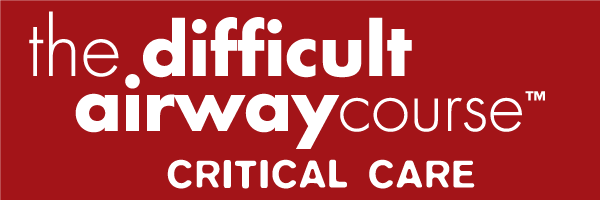#48 Interventional Pulmonology in the ICU w/ Dr Joshua Boster, MD
In this episode of Critical Care Time, Dr. Joshua Boster joins Cyrus and Nick to explore how interventional pulmonary (IP) skills can be life-saving in the ICU. From managing malignant central airway obstruction with rigid bronchoscopy to navigating pleural disease, persistent air leaks, and even life-threatening hemoptysis, Dr. Boster shares practical insights from the front lines. Listeners will learn how IP tools can transform critical care decision-making and offer meaningful interventions when time and options are limited. Whether you're an intensivist, a trainee, or just IP-curious, this episode highlights procedures that not only restore patency—but restore hope. Give it a listen, leave us a review and let us know what you think!
📌 Clinical Pearls
Up to 30% of lung cancer patients may develop central airway obstruction—rigid bronchoscopy can be both diagnostic and therapeutic.
Most patients with malignant central airway obstruction requiring intubation can be extubated after bronchoscopy—don't withdraw care without an IP consult.
Endobronchial stents have high complication rates; place them only when needed and with a clear plan for follow-up.
Percutaneous tracheostomy is faster and carries fewer infections than surgical options when patient anatomy and timing align.
Medical thoracoscopy offers a minimally invasive alternative to surgery in multiloculated empyema, especially early in disease.
Bronchoscopic valve placement can successfully treat persistent air leaks and should be considered in refractory cases.
🧠 Key Topics Covered
What is Interventional Pulmonology?
Dr. Boster introduces the field of interventional pulmonology (IP), outlining its roots in rigid bronchoscopy, its evolution into a formal fellowship-trained subspecialty, and its role in managing central airway obstruction, pleural disease, persistent air leaks, and complex bronchoscopy. He shares insights on training pathways, scope of practice, and the importance of procedural expertise in both diagnostic and therapeutic ICU care.Case 1: Malignant Central Airway Obstruction
The team presents a case of a patient with metastatic squamous cell lung cancer who develops progressive dyspnea and a new oxygen requirement. The discussion walks through key diagnostic steps (CT imaging, physical exam, treatment history), and outlines the procedural planning for rigid bronchoscopy with tumor debulking. Considerations include patient anatomy, anticoagulation status, and airway recanalization goals. The pros and cons of stent placement are reviewed, including complication risks like migration, granulation, and mucus plugging.Intubation Considerations in Patients with Airway Stents
Dr. Boster emphasizes that patients with central airway obstruction or existing airway stents present a high-risk scenario during intubation. He strongly advises fiberoptic intubation whenever possible and cautions against blind laryngoscopy. If bronchoscopy is unavailable, a supraglottic airway may be used as a bridge. Early involvement of an interventional pulmonologist is encouraged to avoid catastrophic airway compromise.Case 2: Percutaneous Tracheostomy (PT) vs Surgical Tracheostomy (ST)
In a COVID ARDS patient requiring prolonged mechanical ventilation, Dr. Boster compares PT and ST. He highlights evidence favoring PT for reduced infection and bleeding rates, provided patient anatomy is favorable. Candidates for PT should be stable and showing signs of weaning readiness. Procedural logistics and technical challenges are discussed, with a focus on selecting the right patient at the right time.Case 3: Pleural Procedures and Empyema Management
Using a case of complex parapneumonic effusion, the discussion shifts to pleural disease. Medical thoracoscopy is introduced as a minimally invasive technique for both diagnosis and drainage, particularly useful in multiloculated or stage I–II empyema. Dr. Boster cites evidence for high treatment success rates and outlines how post-procedural fibrinolytics may further improve outcomes.Persistent Air Leaks and Bronchopleural Fistulas
A trauma case with a persistent air leak after chest tube placement serves as the entry point for discussing endobronchial valve (EBV) placement. Dr. Boster reviews the literature supporting EBVs for post-surgical and spontaneous air leaks, including data showing reduced leak duration and length of stay. Patient selection, procedural planning, and follow-up care are emphasized.Massive Hemoptysis in the ICU
In a high-acuity scenario involving large-volume hemoptysis, Dr. Boster outlines the IP approach: positioning, bleeding source localization, and the use of endobronchial blockers or valves. The limitations of IP intervention are acknowledged, particularly when bleeding is distal or diffuse, and interventional radiology is noted as a key partner for definitive embolization when needed.
🙏 Sponsors:


-
HIGH-WEAN
-
#4: Delirium with Dr. Wes Ely
#21: ICU Nutrition and Myopathy with Dr. Paul Wischmeyer
#43: ICU Mobility with Kali Dayton
-
Central Airway Obstruction in Lung Cancer
Ernst A, Feller-Kopman D, Becker HD, Mehta AC. Central airway obstruction. Chest. 2013;143(5 Suppl):e121S-e141S. doi:10.1378/chest.12-2352Lunn W, Garland R, Ernst A. Central airway obstruction. BMC Pulm Med. 2020;20(1):54. doi:10.1186/s12890-020-1095-0
Ernst A, Silvestri GA, Johnstone D. Interventional pulmonary procedures. Intern Med J. 2010;40(6):399–410. doi:10.1111/j.1445-5994.2009.02113.x
Airway Stenting Outcomes
Lunn W, Feller-Kopman D, Wahidi M, et al. Complications of airway stenting. Ann Thorac Surg. 2005;80(2):434–437. doi:10.1016/j.athoracsur.2005.02.071Mahajan A, Folch E. Long-term outcomes after stenting. Ann Thorac Surg. 2021;111(1):283–289. doi:10.1016/j.athoracsur.2020.04.141
Outcomes After Rigid Bronchoscopy
Dutau H, Vandemoortele T, Laroumagne S, et al. Interventional management of central airway obstruction in malignancy. Respiration. 2012;84(1):55–61. doi:10.1159/000339316Kim H, Park HY, Park SY, et al. Outcomes after therapeutic bronchoscopy. J Thorac Dis. 2017;9(9):3154–3160. doi:10.21037/jtd.2017.08.77
Percutaneous vs Surgical Tracheostomy
Freeman BD, Isabella K, Lin N, Buchman TG. A meta-analysis of tracheostomy techniques. Crit Care. 2014;18(6):544. doi:10.1186/s13054-014-0544-7
Medical Thoracoscopy for Empyema
Mondoni M, et al. Efficacy of thoracoscopy in empyema. BMC Pulm Med. 2021;21(1):127. doi:10.1186/s12890-021-01492-9
Ravaglia C, et al. Medical thoracoscopy for empyema. BMC Pulm Med. 2021;21(1):127.
Brutsche MH, et al. Effectiveness in multiloculated empyema. BMC Pulm Med. 2021;21(1):127.
Endobronchial Valve Use for Air Leaks
Fiorelli A, et al. Bronchoscopic treatment of persistent air leak. J Thorac Dis. 2018;10(11):6158–6167. doi:10.21037/jtd.2018.10.61
Travaline JM, et al. Endobronchial valve outcomes. J Thorac Dis. 2018;10(11):6158–6167.
Hance KA, et al. EBV success in postsurgical cases. J Thorac Dis. 2018;10(11):6158–6167.
Massive Hemoptysis Management
Hohenforst-Schmidt W, et al. Role of bronchoscopic intervention in hemoptysis. Eur Respir J. 2020;56(suppl 64):1195.
https://publications.ersnet.org/content/erj/56/suppl64/1195

